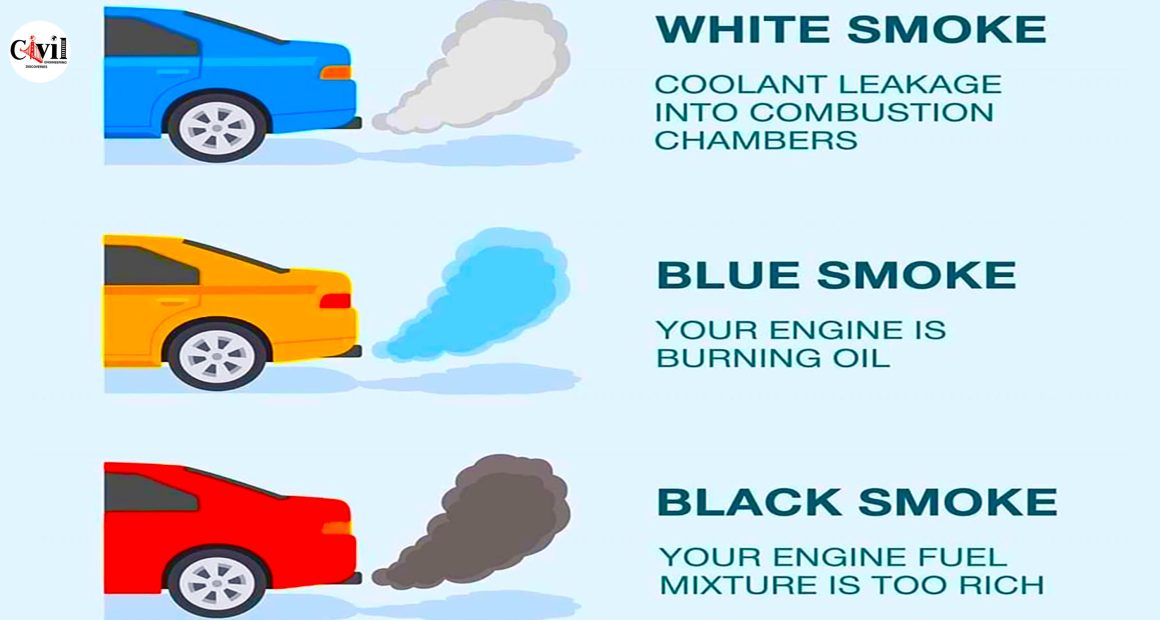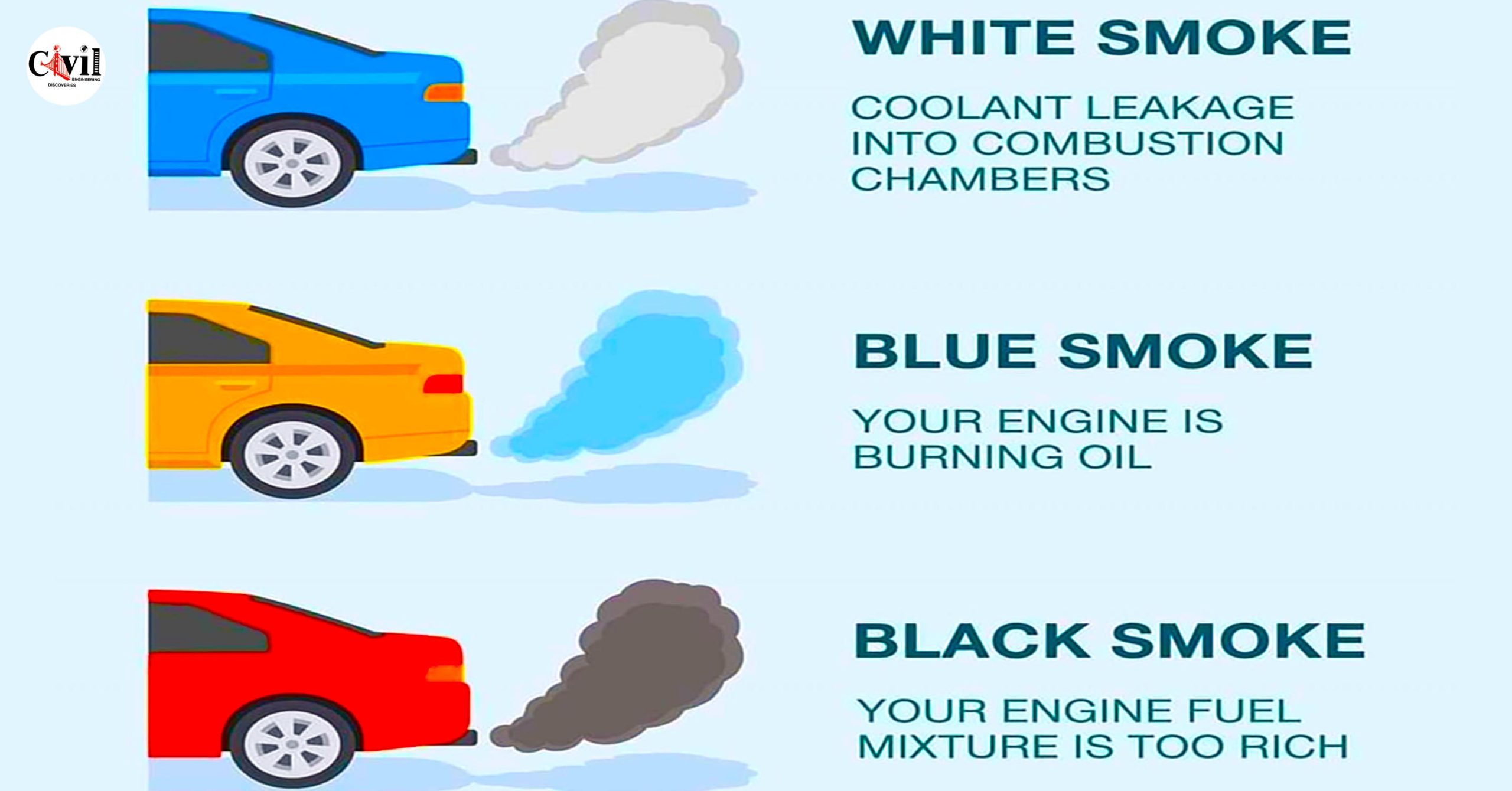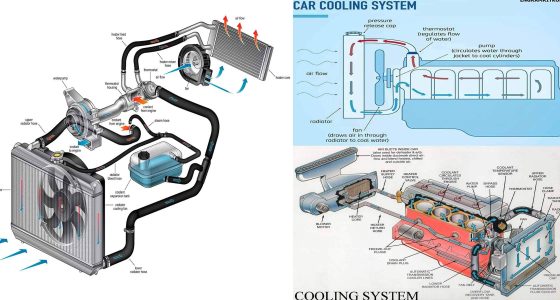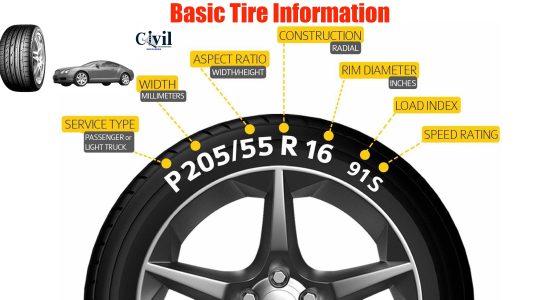When your car releases smoke from its exhaust, the color of the smoke can tell you a lot about the health of your engine. Knowing how to interpret the various smoke colors can help you catch potential problems early. In this article, we will break down the three main types of exhaust smoke—white, blue, and black—and explain what each of them signifies.
1. White Smoke: Coolant Leakage in the Engine
If you see thick, white smoke pouring out of your exhaust, this is often a sign of coolant leaking into the combustion chambers. When the coolant mixes with fuel in the engine, it burns, producing this white smoke.
What Causes White Smoke? White smoke is usually caused by a damaged head gasket, a cracked engine block, or a failed cylinder head. These problems allow the coolant to seep into the engine, which is then burned and released as smoke. Ignoring this issue can lead to severe engine damage.
How to Fix It To resolve the problem, you should get your vehicle inspected immediately. Depending on the severity, the repair might involve replacing the head gasket or addressing a more complex engine issue.
2. Blue Smoke: Oil Burning in the Engine
When blue smoke billows out of your exhaust, it means that your engine is burning oil. This happens when oil leaks into the combustion chamber and gets mixed with the fuel-air mixture, causing it to burn along with the fuel.
Why Is My Engine Burning Oil? This usually happens due to worn valve seals, damaged piston rings, or a clogged Positive Crankcase Ventilation (PCV) valve. These components are crucial in keeping oil out of the combustion chamber. When they fail, oil starts leaking into places it shouldn’t be, resulting in blue smoke.
How to Fix It To stop the blue smoke, you must have the damaged seals or rings replaced. This is a serious issue that should be addressed quickly, as running an engine that’s burning oil can result in engine failure over time.
3. Black Smoke: Fuel Mixture Too Rich
Black smoke from the exhaust is a clear sign that your engine is running “rich,” meaning there is too much fuel and not enough air in the combustion chamber. This imbalance causes unburned fuel to exit through the exhaust as black smoke.
What Causes Black Smoke? A fuel-rich mixture can occur due to several factors, such as a faulty fuel injector, a malfunctioning mass airflow sensor, or a clogged air filter. These issues prevent the correct amount of air from mixing with the fuel, leading to incomplete combustion and the release of black smoke.
How to Fix It Fixing black smoke typically involves diagnosing and repairing the air-fuel mixture imbalance. This may include replacing the air filter, cleaning the fuel injectors, or recalibrating sensors.
Conclusion: Addressing Exhaust Smoke Issues
Any unusual smoke coming from your vehicle’s exhaust should not be ignored. Whether it’s white smoke indicating coolant leakage, blue smoke signaling oil burning, or black smoke showing a rich fuel mixture, these signs are early warnings of mechanical problems that could become costly if left unattended. By understanding what these smoke colors mean, you can take immediate action and keep your car running smoothly for years to come.
Click Here To See How To Hold Steering Wheel Correctly – THIS About Your Personality!






